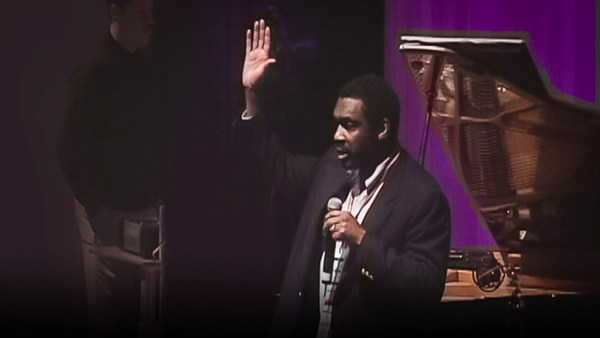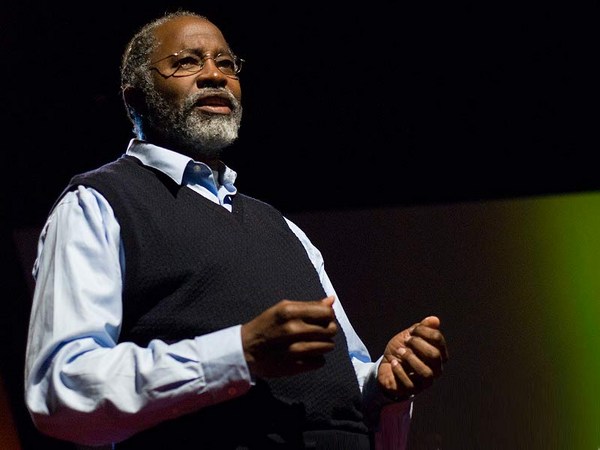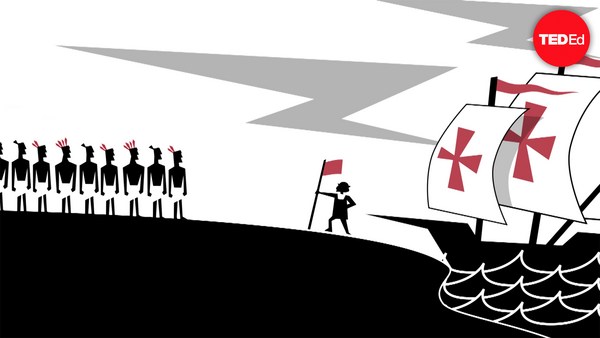"Jó napot, pacák" Which, as somebody here must surely know, means "What's up, guys?" in Magyar, that peculiar non-Indo-European language spoken by Hungarians for which, given the fact that cognitive diversity is at least as threatened as biodiversity on this planet, few would have imagined much of a future even a century or two ago. But there it is: "Jó napot, pacák" I said somebody here must surely know, because despite the fact that there aren't that many Hungarians to begin with, and the further fact that, so far as I know, there's not a drop of Hungarian blood in my veins, at every critical juncture of my life there has been a Hungarian friend or mentor there beside me. I even have dreams that take place in landscapes I recognize as the landscapes of Hungarian films, especially the early movies of Miklos Jancso.
So, how do I explain this mysterious affinity? Maybe it's because my native state of South Carolina, which is not much smaller than present-day Hungary, once imagined a future for itself as an independent country. And as a consequence of that presumption, my hometown was burned to the ground by an invading army, an experience that has befallen many a Hungarian town and village throughout its long and troubled history. Or maybe it's because when I was a teenager back in the '50s, my uncle Henry -- having denounced the Ku Klux Klan and been bombed for his trouble and had crosses burned in his yard, living under death threat -- took his wife and children to Massachusetts for safety and went back to South Carolina to face down the Klan alone. That was a very Hungarian thing to do, as anyone will attest who remembers 1956. And of course, from time to time Hungarians have invented their own equivalent of the Klan.
Well, it seems to me that this Hungarian presence in my life is difficult to account for, but ultimately I ascribe it to an admiration for people with a complex moral awareness, with a heritage of guilt and defeat matched by defiance and bravado. It's not a typical mindset for most Americans, but it is perforce typical of virtually all Hungarians. So, "Jó napot, pacák!"
I went back to South Carolina after some 15 years amid the alien corn at the tail end of the 1960s, with the reckless condescension of that era thinking I would save my people. Never mind the fact that they were slow to acknowledge they needed saving. I labored in that vineyard for a quarter century before making my way to a little kingdom of the just in upstate South Carolina, a Methodist-affiliated institution of higher learning called Wofford College. I knew nothing about Wofford and even less about Methodism, but I was reassured on the first day that I taught at Wofford College to find, among the auditors in my classroom, a 90-year-old Hungarian, surrounded by a bevy of middle-aged European women who seemed to function as an entourage of Rhinemaidens.
His name was Sandor Teszler. He was a puckish widower whose wife and children were dead and whose grandchildren lived far away. In appearance, he resembled Mahatma Gandhi, minus the loincloth, plus orthopedic boots. He had been born in 1903 in the provinces of the old Austro-Hungarian Empire, in what later would become Yugoslavia. He was ostracized as a child, not because he was a Jew -- his parents weren't very religious anyhow -- but because he had been born with two club feet, a condition which, in those days, required institutionalization and a succession of painful operations between the ages of one and 11. He went to the commercial business high school as a young man in Budapest, and there he was as smart as he was modest and he enjoyed a considerable success. And after graduation when he went into textile engineering, the success continued. He built one plant after another. He married and had two sons. He had friends in high places who assured him that he was of great value to the economy.
Once, as he had left instructions to have done, he was summoned in the middle of the night by the night watchman at one of his plants. The night watchman had caught an employee who was stealing socks -- it was a hosiery mill, and he simply backed a truck up to the loading dock and was shoveling in mountains of socks. Mr. Teszler went down to the plant and confronted the thief and said, "But why do you steal from me? If you need money you have only to ask." The night watchman, seeing how things were going and waxing indignant, said, "Well, we're going to call the police, aren't we?" But Mr. Teszler answered, "No, that will not be necessary. He will not steal from us again."
Well, maybe he was too trusting, because he stayed where he was long after the Nazi Anschluss in Austria and even after the arrests and deportations began in Budapest. He took the simple precaution of having cyanide capsules placed in lockets that could be worn about the necks of himself and his family. And then one day, it happened: he and his family were arrested and they were taken to a death house on the Danube. In those early days of the Final Solution, it was handcrafted brutality; people were beaten to death and their bodies tossed into the river. But none who entered that death house had ever come out alive. And in a twist you would not believe in a Steven Spielberg film -- the Gauleiter who was overseeing this brutal beating was the very same thief who had stolen socks from Mr. Teszler's hosiery mill. It was a brutal beating. And midway through that brutality, one of Mr. Teszler's sons, Andrew, looked up and said, "Is it time to take the capsule now, Papa?" And the Gauleiter, who afterwards vanishes from this story, leaned down and whispered into Mr. Teszler's ear, "No, do not take the capsule. Help is on the way." And then resumed the beating.
But help was on the way, and shortly afterwards a car arrived from the Swiss Embassy. They were spirited to safety. They were reclassified as Yugoslav citizens and they managed to stay one step ahead of their pursuers for the duration of the War, surviving burnings and bombings and, at the end of the War, arrest by the Soviets. Probably, Mr. Teszler had gotten some money into Swiss bank accounts because he managed to take his family first to Great Britain, then to Long Island and then to the center of the textile industry in the American South. Which, as chance would have it, was Spartanburg, South Carolina, the location of Wofford College. And there, Mr. Teszler began all over again and once again achieved immense success, especially after he invented the process for manufacturing a new fabric called double-knit.
And then in the late 1950s, in the aftermath of Brown v. Board of Education, when the Klan was resurgent all over the South, Mr. Teszler said, "I have heard this talk before." And he called his top assistant to him and asked, "Where would you say, in this region, racism is most virulent?" "Well, I don't rightly know, Mr. Teszler. I reckon that would be Kings Mountain." "Good. Buy us some land in Kings Mountain and announce we are going to build a major plant there." The man did as he was told, and shortly afterwards, Mr. Teszler received a visit from the white mayor of Kings Mountain. Now, you should know that at that time, the textile industry in the South was notoriously segregated. The white mayor visited Mr. Teszler and said, "Mr. Teszler, I trust you’re going to be hiring a lot of white workers." Mr. Teszler told him, "You bring me the best workers that you can find, and if they are good enough, I will hire them." He also received a visit from the leader of the black community, a minister, who said, "Mr. Teszler, I sure hope you're going to hire some black workers for this new plant of yours." He got the same answer: "You bring the best workers that you can find, and if they are good enough, I will hire them." As it happens, the black minister did his job better than the white mayor, but that's neither here or there. Mr. Teszler hired 16 men: eight white, eight black.
They were to be his seed group, his future foremen. He had installed the heavy equipment for his new process in an abandoned store in the vicinity of Kings Mountain, and for two months these 16 men would live and work together, mastering the new process. He gathered them together after an initial tour of that facility and he asked if there were any questions. There was hemming and hawing and shuffling of feet, and then one of the white workers stepped forward and said, "Well, yeah. We’ve looked at this place and there's only one place to sleep, there's only one place to eat, there's only one bathroom, there's only one water fountain. Is this plant going to be integrated or what?" Mr. Teszler said, "You are being paid twice the wages of any other textile workers in this region and this is how we do business. Do you have any other questions?" "No, I reckon I don't." And two months later when the main plant opened and hundreds of new workers, white and black, poured in to see the facility for the first time, they were met by the 16 foremen, white and black, standing shoulder to shoulder. They toured the facility and were asked if there were any questions, and inevitably the same question arose: "Is this plant integrated or what?" And one of the white foremen stepped forward and said, "You are being paid twice the wages of any other workers in this industry in this region and this is how we do business. Do you have any other questions?"
And there were none. In one fell swoop, Mr. Teszler had integrated the textile industry in that part of the South. It was an achievement worthy of Mahatma Gandhi, conducted with the shrewdness of a lawyer and the idealism of a saint. In his eighties, Mr. Teszler, having retired from the textile industry, adopted Wofford College, auditing courses every semester, and because he had a tendency to kiss anything that moved, becoming affectionately known as "Opi" -- which is Magyar for grandfather -- by all and sundry. Before I got there, the library of the college had been named for Mr. Teszler, and after I arrived in 1993, the faculty decided to honor itself by naming Mr. Teszler Professor of the College -- partly because at that point he had already taken all of the courses in the catalog, but mainly because he was so conspicuously wiser than any one of us. To me, it was immensely reassuring that the presiding spirit of this little Methodist college in upstate South Carolina was a Holocaust survivor from Central Europe. Wise he was, indeed, but he also had a wonderful sense of humor. And once for an interdisciplinary class, I was screening the opening segment of Ingmar Bergman's "The Seventh Seal." As the medieval knight Antonius Block returns from the wild goose chase of the Crusades and arrives on the rocky shore of Sweden, only to find the specter of death waiting for him, Mr. Teszler sat in the dark with his fellow students. And as death opened his cloak to embrace the knight in a ghastly embrace, I heard Mr. Teszler's tremulous voice: "Uh oh," he said, "This doesn't look so good." (Laughter)
But it was music that was his greatest passion, especially opera. And on the first occasion that I visited his house, he gave me honor of deciding what piece of music we would listen to. And I delighted him by rejecting "Cavalleria Rusticana" in favor of Bela Bartok's "Bluebeard's Castle." I love Bartok's music, as did Mr. Teszler, and he had virtually every recording of Bartok's music ever issued. And it was at his house that I heard for the first time Bartok's Third Piano Concerto and learned from Mr. Teszler that it had been composed in nearby Asheville, North Carolina in the last year of the composer's life. He was dying of leukemia and he knew it, and he dedicated this concerto to his wife, Dita, who was herself a concert pianist. And into the slow, second movement, marked "adagio religioso," he incorporated the sounds of birdsong that he heard outside his window in what he knew would be his last spring; he was imagining a future for her in which he would play no part. And clearly this composition is his final statement to her -- it was first performed after his death -- and through her to the world. And just as clearly, it is saying, "It's okay. It was all so beautiful. Whenever you hear this, I will be there."
It was only after Mr. Teszler's death that I learned that the marker on the grave of Bela Bartok in Hartsdale, New York was paid for by Sandor Teszler. "Jó napot, Bela!" Not long before Mr. Teszler’s own death at the age of 97, he heard me hold forth on human iniquity. I delivered a lecture in which I described history as, on the whole, a tidal wave of human suffering and brutality, and Mr. Teszler came up to me afterwards with gentle reproach and said, "You know, Doctor, human beings are fundamentally good." And I made a vow to myself, then and there, that if this man who had such cause to think otherwise had reached that conclusion, I would not presume to differ until he released me from my vow. And now he's dead, so I'm stuck with my vow. "Jó napot, Sandor!"
I thought my skein of Hungarian mentors had come to an end, but almost immediately I met Francis Robicsek, a Hungarian doctor -- actually a heart surgeon in Charlotte, North Carolina, then in his late seventies -- who had been a pioneer in open-heart surgery, and, tinkering away in his garage behind his house, had invented many of the devices that are standard parts of those procedures. He's also a prodigious art collector, beginning as an intern in Budapest by collecting 16th- and 17th-century Dutch art and Hungarian painting, and when he came to this country moving on to Spanish colonial art, Russian icons and finally Mayan ceramics. He's the author of seven books, six of them on Mayan ceramics. It was he who broke the Mayan codex, enabling scholars to relate the pictographs on Mayan ceramics to the hieroglyphs of the Mayan script.
On the occasion of my first visit, we toured his house and we saw hundreds of works of museum quality, and then we paused in front of a closed door and Dr. Robicsek said, with obvious pride, "Now for the piece De resistance." And he opened the door and we walked into a windowless 20-by-20-foot room with shelves from floor to ceiling, and crammed on every shelf his collection of Mayan ceramics. Now, I know absolutely nothing about Mayan ceramics, but I wanted to be as ingratiating as possible so I said, "But Dr. Robicsek, this is absolutely dazzling." "Yes," he said. "That is what the Louvre said. They would not leave me alone until I let them have a piece, but it was not a good one." (Laughter)
Well, it occurred to me that I should invite Dr. Robicsek to lecture at Wofford College on -- what else? -- Leonardo da Vinci. And further, I should invite him to meet my oldest trustee, who had majored in French history at Yale some 70-odd years before and, at 89, still ruled the world's largest privately owned textile empire with an iron hand. His name is Roger Milliken. And Mr. Milliken agreed, and Dr. Robicsek agreed. And Dr. Robicsek visited and delivered the lecture and it was a dazzling success. And afterwards we convened at the President's House with Dr. Robicsek on one hand, Mr. Milliken on the other. And it was only at that moment, as we were sitting down to dinner, that I recognized the enormity of the risk I had created, because to bring these two titans, these two masters of the universe together -- it was like introducing Mothra to Godzilla over the skyline of Tokyo. If they didn't like each other, we could all get trampled to death.
But they did, they did like each other. They got along famously until the very end of the meal, and then they got into a furious argument. And what they were arguing about was this: whether the second Harry Potter movie was as good as the first. (Laughter) Mr. Milliken said it was not. Dr. Robicsek disagreed. I was still trying to take in the notion that these titans, these masters of the universe, in their spare time watch Harry Potter movies, when Mr. Milliken thought he would win the argument by saying, "You just think it's so good because you didn't read the book." And Dr. Robicsek reeled back in his chair, but quickly gathered his wits, leaned forward and said, "Well, that is true, but I'll bet you went to the movie with a grandchild." "Well, yes, I did," conceded Mr. Milliken. "Aha!" said Dr. Robicsek. "I went to the movie all by myself." (Laughter) (Applause)
And I realized, in this moment of revelation, that what these two men were revealing was the secret of their extraordinary success, each in his own right. And it lay precisely in that insatiable curiosity, that irrepressible desire to know, no matter what the subject, no matter what the cost, even at a time when the keepers of the Doomsday Clock are willing to bet even money that the human race won't be around to imagine anything in the year 2100, a scant 93 years from now. "Live each day as if it is your last," said Mahatma Gandhi. "Learn as if you'll live forever." This is what I'm passionate about. It is precisely this. It is this inextinguishable, undaunted appetite for learning and experience, no matter how risible, no matter how esoteric, no matter how seditious it might seem. This defines the imagined futures of our fellow Hungarians -- Robicsek, Teszler and Bartok -- as it does my own. As it does, I suspect, that of everybody here.
To which I need only add, "Ez a mi munkank; es nem is keves." This is our task; we know it will be hard. "Ez a mi munkank; es nem is keves. Jó napot, pacák!" (Applause)





